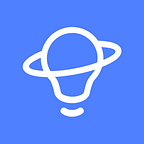By: Tomas Agrimbau (Ft. Bleap.cc)
About 12 years ago I was writing my first line of code (in PHP if I remember correctly) and since then I have not been able to stop doing it. Whether it was for work, personal projects or curiosity, everything made me want to write instructions in some logical programming language.
This year I delved into something that I had been listening to for a long time but did not quite catch my attention: the No-code tools.
My main biases were:
- “They are not useful for programmers”
- “They don’t scale”
- “They have poor quality”
- “You can only do simple things”
Today I find myself recommending this type of tools to early entrepreneurs who need to validate their ideas and to experienced programmers who want to focus on the features that add the most value.
So what are no-code tools?
No-code is a concept that seeks to program through a graphical interface, unlike traditional programming where you use logical programming languages (Java, Ruby, Python, etc).
The simplest example can be a website in Wix, where we can have our own customized website online in a matter of minutes without having to program a single line of code.
Just as there are no-code tools for web design, there are also tools for e-commerce (Shopify), blogs (Wordpress), automations (Zapier), mobile apps (Appsheet), web apps (Bubble) and even APIs (NoCodeAPI).
To use each of these tools, it is not necessary to know how to program or hire a programmer (a very common obstacle among tech entrepreneurs). It is not only about knowing how to program, it is about gaining efficiency in development. No matter how experienced and fast a programmer is, it would never take him less than 10 hours (at least) to have an online website like the ones you can generate in minutes with Wix. This is even more remarkable with the rest of the tools (a basic API hardly takes less than 20/30 hours of development).
Who can use them?
Anyone can use these kinds of tools. The complexity will depend on the specific project, and the learning curve of each one will depend on the technical concepts (not programming) of each one. However, without a doubt, it will always be easier to touch a line of code on a black screen. It’s about us having control over the product.
To this day, when I review the doubts I had, I come to other conclusions:
- “They do not work for programmers”
Coding (programming) is one of the most expensive activities in terms of time and knowledge required. For a programmer, developing something with code should never be the first option. Rather the last one (once we have the certainty of which is the definitive solution that we must develop).
- “They do not scale”
A no-code tool will never achieve the scalability in terms of performance and customization that traditional programming has. But the question we have to ask ourselves is how many projects we develop have to consider this in their first versions.
When we still do not even know if there is a market, we do not know if our solution is the correct one and we do not even have a significant number of users to scale it. Or even how many projects started failed because they couldn’t scale the software?
- “They have poor quality”
In software we associate quality with the fact that everything works for what it was intended and that the dreaded “bugs” do not appear.
Understanding this alone, let’s think about how likely we, or our team, are to generate bugs in a functionality that we are developing from scratch compared to features that no-code tools offer us and are already being used by thousands of users. Where each bug reported has already been corrected later and each optimization to make it work better is already implemented.
- “You can only do simple things”
5 years ago this was a reality. But the advance of no-code is imminent and the tools are becoming more and more widespread every day.
The development of sophisticated web applications, such as our own Bleap product, are already possible with tools such as Bubble or Webflow, which allows the development of platforms such as Airbnb, Instagram or Uber in probably a quarter of the time and, of course, without needing to know how to program.
Making software without knowing how to program, developing in a quarter of the time, and having quality products may seem too good to be true. But no-code tools were born to make software development more accessible, in terms of costs and times. And they are doing it.
Now its up to restless entrepreneurs and curious programmers to ride this wave and exploit its full potential.
Written by: Tomas Agrimbau (CTO at Bleap.cc)
________________________________________________________________
Read our previous story → What you need to know to make more accessible products
If you like our content and want to know more, sign up for our newsletter by clicking here.
